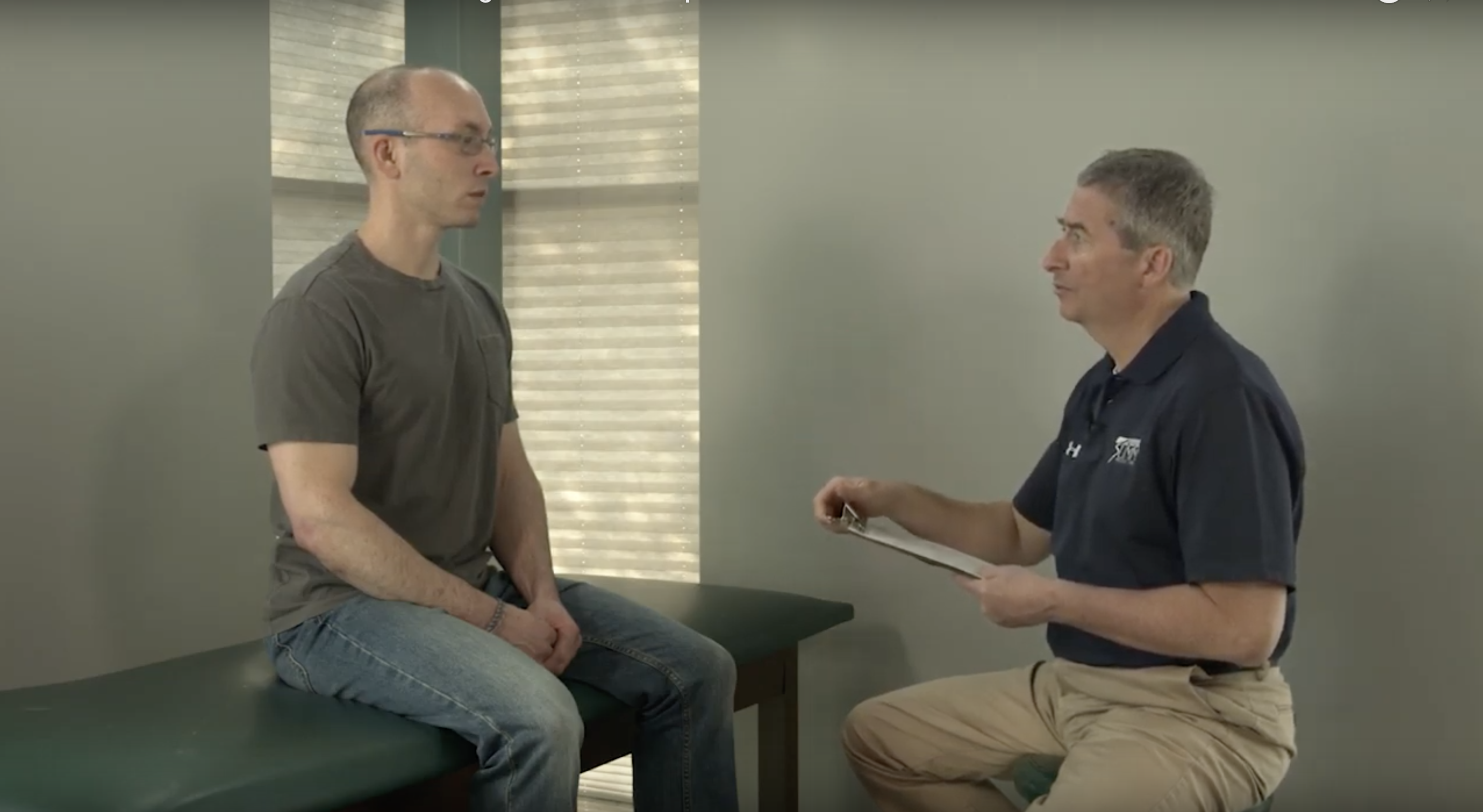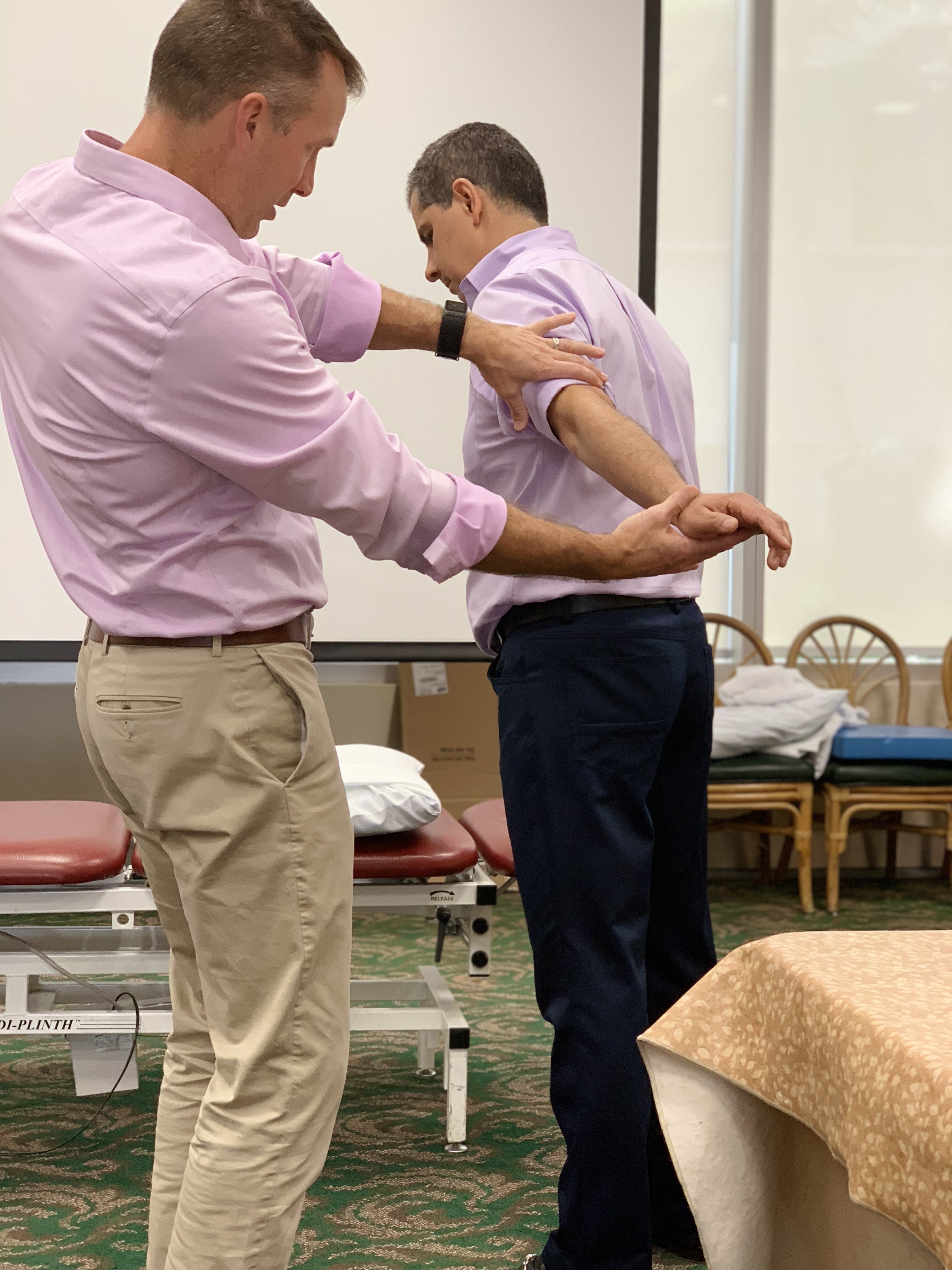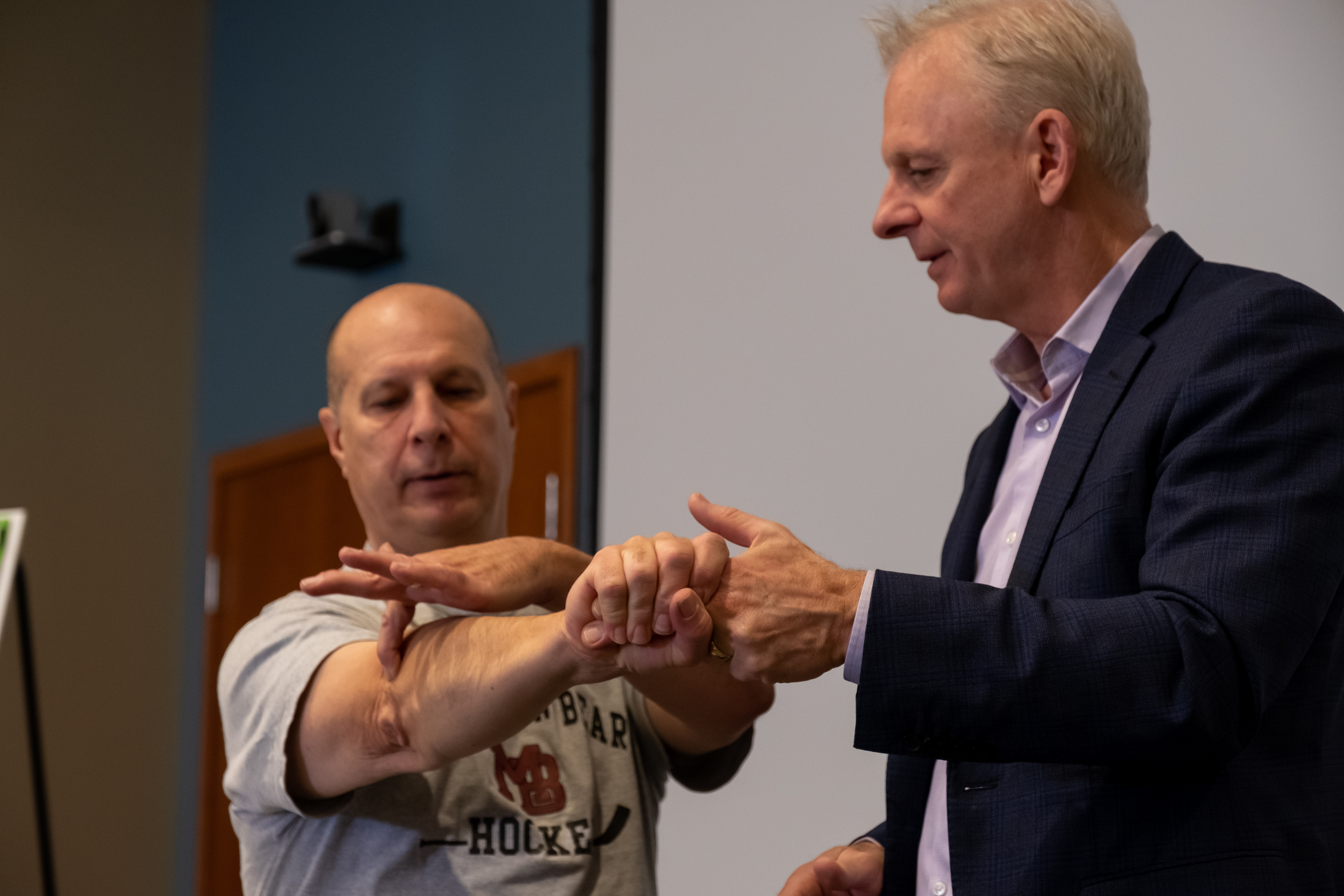News Room
Biopsychosocial Factors and Their Role in MDT
In the past, psychology may have seemed an entirely different world from physical therapy. But, with the science showing that pain may be an actual or potential tissue damage, comprehensively assessing and managing biopsychosocial factors becomes a relevant clinical issue.
It’s in the name. PTs are indeed “therapists” that cannot ignore the body beyond tissues and joints. Traditionally viewed as strictly mechanical, one form of physical therapy that has not had to adapt to biopsychosocial factors is the McKenzie Method® of MDT.
 “The best biopsychosocial therapist I’ve ever seen is [McKenzie Institute Founder] Robin McKenzie,” Dana Greene, PT, OCS, Dip. MDT said. “The last conference he spoke at before he passed away, he said that after all my years of treating patients, I realized the most important thing on your first visit with this patient is to create a rapport and gain their confidence.”
“The best biopsychosocial therapist I’ve ever seen is [McKenzie Institute Founder] Robin McKenzie,” Dana Greene, PT, OCS, Dip. MDT said. “The last conference he spoke at before he passed away, he said that after all my years of treating patients, I realized the most important thing on your first visit with this patient is to create a rapport and gain their confidence.”
“We’ve always recognized that these are issues. It’s things we do normally and naturally,” he said. “By the time you’re done with their history, you’re going to have a pretty good sense of whether this patient has psychological overlay or barriers to recovery.”
That assessment, a cornerstone of the McKenzie Method, pulls in numerous biopsychosocial factors, according to Jane Borgehammar, PT, OCS, Dip. MDT, FAAOMPT.
“Assessment is really what MDT is all about,” she said. “The patient comes in and shows you where the pain is and then they tell you how it affects their life, so you’re already getting some of those factors of the biopsychosocial aspect. They’re telling you about their function, they’re telling you about how they function, how their environment may be supportive or unsupportive.
where the pain is and then they tell you how it affects their life, so you’re already getting some of those factors of the biopsychosocial aspect. They’re telling you about their function, they’re telling you about how they function, how their environment may be supportive or unsupportive.
“I let the patient lead the assessment and then my job is to understand that quantity and that amount [of pain] and their response to movement,” she said. “It’s always using patient-driven forces.”
Some patients don’t have a healthy understanding of pain – that hurt isn’t associated with harm – and they’re fearful to move as they feel they might be damaging their bodies. There are social issues like the negative attention they may get because of chronic pain.
“Too many people, because they’ve got chronic pain, just assume there’s not a mechanical answer for it. Our answer is we evaluate everybody because some of those chronic pain patients who are told they have to live with it and they’ve got to rewire their brain don’t,” Greene said. “You find the directional preference and you can make them better fast. It’s just that they’ve never been treated correctly.”
The MDT system begins with a thorough mechanical evaluation to establish a “cause-and-effect” relationship between historical pain behavior and patient response to repeated test movements, positions and activities.
A systematic progression of applied mechanical forces utilizes pain responses and mechanical responses to classify the disorder. Clinicians then develop a specific plan of care based on those examination results that empowers patients to treat themselves when possible.
“In reality, when we educate them and we empower them, we’re actually affecting both physical and mental health,” Borgehammar said.
The speediness of results is also a major factor. When MDT eradicates pain quickly, sometimes immediately, patients gain confidence and comfort, Greene said.
 “If you go back 30 years ago, we were always trying to find the culprit, always trying to classify the structure that caused the pain,” Borgehammar said. “Now we’re not just looking at one thing and saying ‘ah, that’s it!’ We’re actually looking at a cluster of factors to really give us a higher chance of being correct with our assessment, give us a higher chance of being correct with how we manage the patient.”
“If you go back 30 years ago, we were always trying to find the culprit, always trying to classify the structure that caused the pain,” Borgehammar said. “Now we’re not just looking at one thing and saying ‘ah, that’s it!’ We’re actually looking at a cluster of factors to really give us a higher chance of being correct with our assessment, give us a higher chance of being correct with how we manage the patient.”
Physical therapists deal with pain and pain is an emotional experience, one that requires biopsychosocial analysis. For MDT clinicians, it’s long been an integral part of their process, one that calls for thorough assessment and patient-empowering education.
Share your news! Send your story to us and we'll post it for everyone to read.




